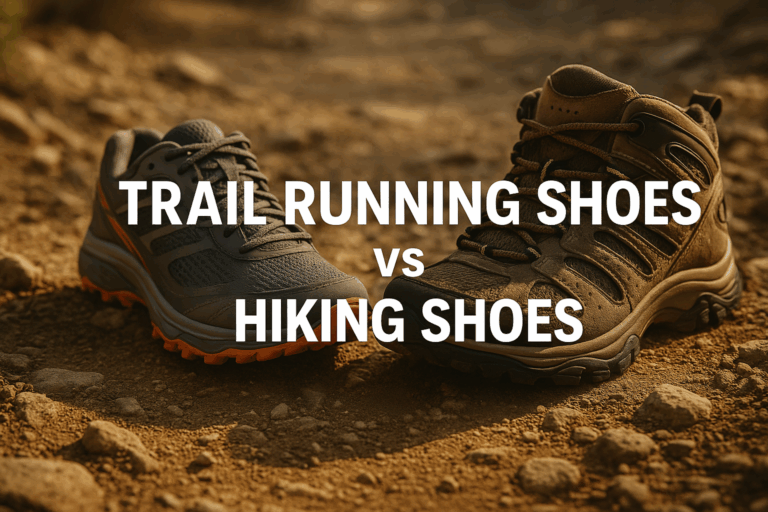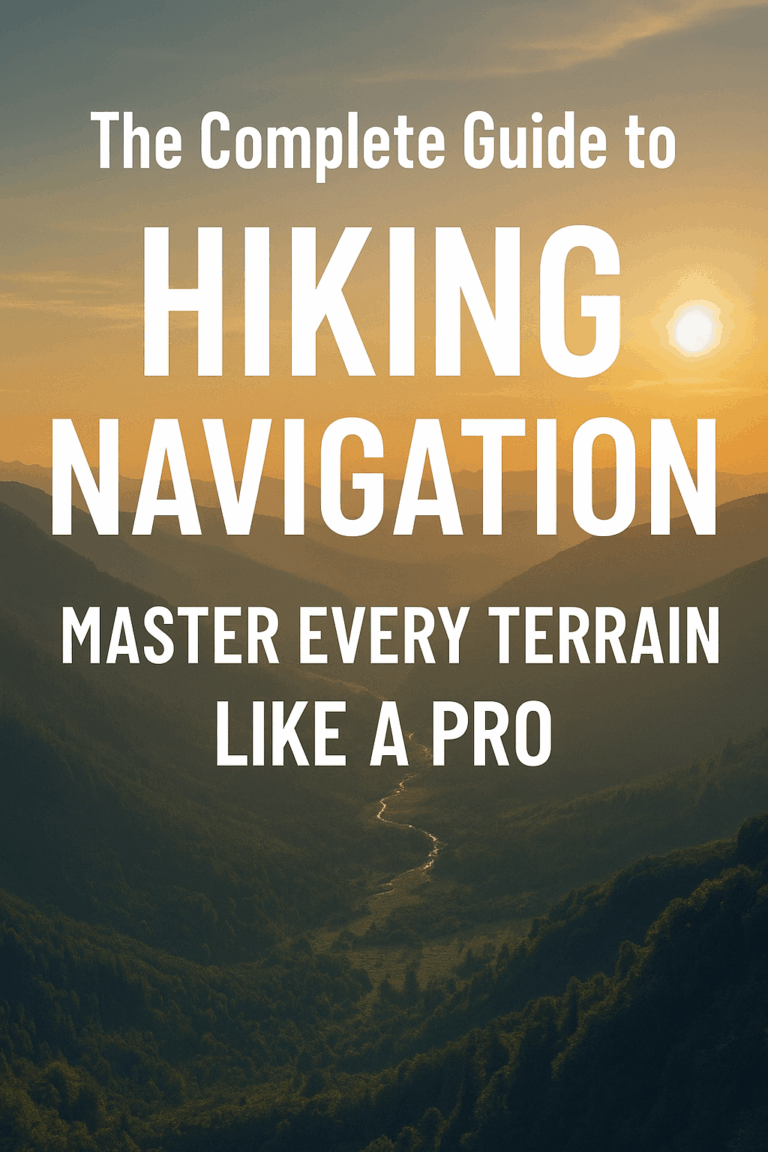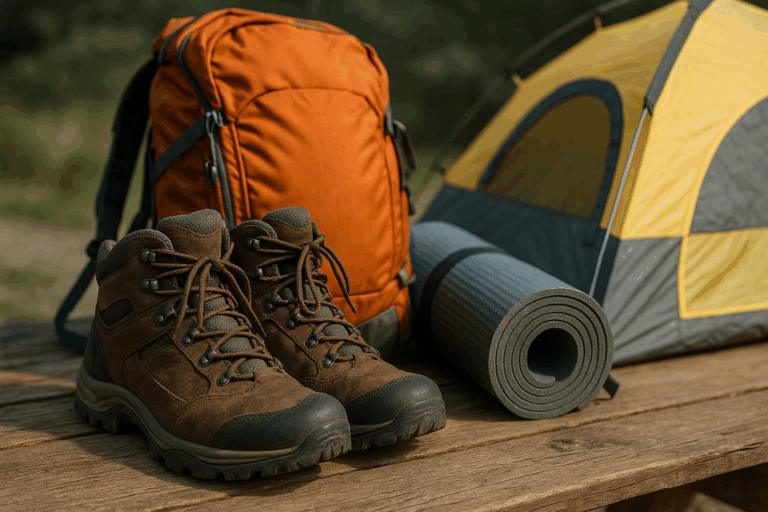Best Trekking Poles: Top Models for All Types of Terrain
Best Trekking Poles: Field-Tested Reviews from Real Trail Miles
Finding the right poles can transform your hiking experience, but with so many options out there, it’s tough to know which ones actually deliver. I’ve put thousands of miles on various poles over the years, and these five stand out as the best trekking poles for different hiking styles and budgets.
Why I Finally Ditched My Old Poles for the Black Diamond Alpine Carbon Cork (And What I Learned the Hard Way)
I’ll be honest – I was that stubborn hiker who used the same beat-up aluminum poles for like five years before finally upgrading. My old poles were heavy as heck and made my shoulders ache on longer treks, but I kept telling myself “poles are poles, right?”
Wrong. So wrong.
Last spring, I was planning a multi-day backpacking trip through some gnarly terrain, and my buddy kept raving about his Black Diamond Alpine Carbon Cork poles. I figured it was time to stop being cheap and see what all the fuss was about. Best hiking decision I’ve made in years, honestly, and these definitely rank among the best trekking poles I’ve tested.
👉 Check current price and specs on Black Diamond’s website
Features
The first thing that hit me was the weight difference. At 486 grams per pair, these carbon fiber poles are ridiculously light compared to my old aluminum ones. I’m talking about shaving off nearly a pound from your gear – and when you’re doing 15+ mile days, every ounce matters.
But here’s where I made my first rookie mistake with telescoping poles – I didn’t properly adjust the sections before my first big hike. Ended up having one collapse on me mid-stride on a rocky descent. Not fun. The three-section design is actually brilliant for packing (they compress down to about 26 inches), but you’ve got to make sure those twist locks are properly tightened. I learned to give each section a firm twist and a little tug test before hitting the trail.
The cork grips are honestly a game-changer, though I didn’t realize it until I’d been using them for a few months. Natural cork absorbs moisture from your hands instead of getting slippery like rubber or foam grips do. During humid summer hikes, my old poles would get so slick I’d have to wipe them down constantly. These cork grips actually get more comfortable as they break in and conform to your hand shape.
Pros
Your arms and shoulders will thank you, especially on those steep ascents where you’re really leaning into your poles for support. The lightweight carbon fiber construction makes a huge difference on long hiking days, which is why these are easily among the best trekking poles for serious hikers.
The durability has been solid so far. I’ve put these through desert canyoning, rocky scrambles, and muddy forest trails without any issues. Carbon fiber has this reputation for being fragile, but these poles have held up to everything I’ve thrown at them. The locking mechanisms are still tight after dozens of hikes.
For all-season use, these poles really shine. I’ve used them in snow with the powder baskets, on summer rock scrambles, and fall leaf-peeping hikes. The carbon fiber doesn’t get as cold as aluminum in winter conditions, which is a nice bonus your hands will appreciate.
Cons
Price-wise, yeah, they’re not cheap. We’re talking around $140-160 depending on where you shop. But when I calculated the cost per mile over the hundreds of trail miles I’ve covered with them, it’s actually pretty reasonable for the performance upgrade you get.
One thing that caught me off guard was the slight vibration you get when you plant these poles on really hard surfaces like granite or concrete. The carbon fiber transmits more shock than aluminum does. It’s not a deal-breaker, but it’s noticeable on pavement or solid rock. I’ve learned to plant them at a slight angle rather than straight down on hard surfaces – cuts down on the jarring feeling.
If you’re on the fence about upgrading your trekking poles, and you do serious hiking regularly, the Black Diamond Alpine Carbon Cork poles are worth the investment. Just make sure you practice adjusting those telescoping sections before you need them on the trail – trust me on that one.
My Love-Hate Relationship with the Leki Makalu Lite COR-TEC (Spoiler: It’s Mostly Love)
So after my carbon fiber pole adventure, you’d think I’d be a total convert, right? Well, life has a funny way of humbling you. During a particularly aggressive scramble last fall, I managed to put a hairline crack in one of my fancy carbon poles. Cue the panic.
My local gear shop recommended the Leki Makalu Lite COR-TEC as a backup, and honestly, I was skeptical. Aluminum? Going backwards much? But sometimes you gotta trust the experts, and man, am I glad I did. These have earned their place among the best trekking poles for reliability.
Features
First off, let’s talk about that COR-TEC grip – it’s this weird cork and rubber blend that Leki cooked up. I was expecting it to feel cheap or gimmicky, but it’s actually brilliant. You get the moisture-wicking properties of cork with the durability of rubber. During a sweaty summer hike in humid conditions, these grips stayed comfortable when my hands were basically swimming in sweat.
The ergonomic angled grip threw me off at first. Most poles have straight grips, but these have this subtle curve that matches how your hand naturally wants to hold them. Took me about three hikes to really appreciate it, but now when I go back to straight grips, they feel awkward.
At 510 grams per pair, they’re definitely heavier than my carbon poles – about 24 grams more, which doesn’t sound like much until you’re swinging them for eight hours straight. The aluminum construction means they’re built like tanks though. I’ve accidentally whacked them against rocks, dropped them on concrete, and they just keep going.
Pros
The stability is what really won me over. These telescoping poles lock down tight with Leki’s twist lock system, and I mean tight. Once you dial them in, they don’t budge. I’ve never had a section collapse unexpectedly, which happened to me more than once with cheaper poles in the past. This reliability makes them some of the best trekking poles for technical terrain.
That aluminum construction makes them incredibly durable for the price point. I’ve been using mine for over a year now, and they look almost new despite some pretty rough treatment. They don’t scratch or dent easily like some softer aluminum poles do.
The reliability factor is huge too. These are the kind of poles you can depend on for serious backcountry adventures. I’ve taken them on multi-day treks where pole failure would’ve been a real problem, and they’ve never let me down. That peace of mind is worth the slight weight penalty.
Cons
Let’s be real about the weight thing – if you’re a gram counter, these aren’t your poles. That extra 24 grams might not seem like much, but it adds up over long distances. My shoulders definitely notice the difference compared to carbon fiber poles, especially on those brutal uphill slogs.
The twist locks took me forever to figure out properly. I’m talking like six hikes before I stopped over-tightening them and making adjustments a pain in the butt. There’s this sweet spot where they’re secure but not impossible to adjust, and finding it requires some trial and error. I actually watched a YouTube video to make sure I wasn’t doing something stupid.
Here’s something nobody tells you – the twist mechanism can get gunked up with trail debris pretty easily. After muddy hikes, I’ve had to clean out grit from the threads or they start binding up. It’s not a huge deal, but it’s maintenance that simpler locking systems don’t need.
Price-wise, they’re reasonable for what you get, but they’re not budget poles either. You’re looking at around $120-140 depending on sales.
The Leki Makalu Lite COR-TEC poles have become my go-to for serious hiking where I need absolute reliability over saving a few grams. They’re not the lightest or the fanciest, but they’re the poles I grab when I really can’t afford to have gear fail on me. Sometimes boring and dependable beats flashy and lightweight – lesson learned the hard way.
👉 View Leki Makalu Lite COR-TEC specs on Leki’s official store
How the Gossamer Gear LT5 Changed My Long-Distance Hiking Game (And Nearly Broke My Heart)
Okay, so picture this: I’m six days into a thru-hike attempt, carrying way too much gear, and my shoulders are screaming. Every ounce matters when you’re doing 20+ mile days, and I kept staring at my poles thinking “there’s gotta be something lighter out there.”
Enter the Gossamer Gear LT5. At 286 grams per pair, these things are basically feathers with straps. For ultralight enthusiasts, these are definitely contenders for the best trekking poles in terms of pure weight savings.
I’ll admit, when I first pulled them out of the box, I was genuinely worried I’d gotten ripped off. They felt so light I actually weighed them twice to make sure the specs were right. Coming from heavier aluminum poles, holding these felt like holding nothing at all.
Features
The three-section telescoping design packs down incredibly small – we’re talking about 22 inches collapsed. Perfect for ultralight backpackers who need every inch of pack space. The carbon fiber construction is what makes the magic happen weight-wise, but it’s also what makes them feel almost fragile in your hands at first.
Those foam grips threw me for a loop initially. Most serious hikers I know swear by cork, but foam actually makes sense for ultralight applications. It’s lighter than cork, absorbs sweat decently, and doesn’t add bulk. The downside? It’s not as durable, and after about 300 miles of use, mine started showing some wear.
The minimalist design means no fancy bells and whistles – no shock absorption, no ergonomic angles, just pure function. Sometimes simple is better, especially when you’re counting grams.
Pros
Let me tell you about the weight savings – it’s not just about the numbers on paper. When you’re swinging these poles thousands of times per day, that reduced weight actually reduces fatigue in your arms and shoulders. On my longest hiking days, I genuinely felt less beat up using these compared to heavier poles. For pure weight considerations, these rank among the best trekking poles available.
👉 Buy or learn more about LT5 poles on Gossamer Gear
For long-distance hiking, these are honestly hard to beat. I’ve used them on 15-20 mile days consistently, and the packability is incredible. They disappear in your pack when you’re scrambling or need your hands free.
The three-section design is surprisingly stable once you get the adjustment right. I was worried about flex or wobble, but they lock down solid. The carbon fiber has this nice dampening quality that absorbs trail vibration better than I expected.
Cons
Here’s where things get real – durability is definitely a concern. About eight months into owning these, I had a close call on some rocky terrain where I put too much side load on one pole. Didn’t break, but I could feel it flex in a way that made me nervous. These are definitely not “abuse them and keep going” poles like aluminum ones.
The foam grips, while functional, aren’t winning any comfort awards. After really long days, my hands would get sore in ways they don’t with cork grips. The foam also tends to get pretty gross after sweaty hikes – it absorbs odors more than cork does.
I learned the hard way that these aren’t ideal for rugged terrain. During a particularly gnarly rock scramble, I was constantly worried about putting too much stress on them. You find yourself babying them instead of just trusting your gear, which isn’t great when you need to focus on navigation or safety.
The minimalist design also means no wrist straps, which some people hate. I actually don’t mind it, but if you’re used to having that security, it’s an adjustment.
Here’s my honest take after putting serious miles on these poles: they’re perfect for their intended purpose but terrible outside their wheelhouse. If you’re doing long-distance hiking on established trails where every gram counts, they’re brilliant. But if you’re doing mixed terrain or rugged backcountry stuff, you’ll probably want something more robust.
I still keep mine for specific applications – long trail days where weight matters more than durability. But they taught me that ultralight gear often means making compromises, and you better be sure those compromises align with how you actually hike.
Why the MSR DynaLock Ascent Carbon Made Me Rethink Everything About Folding Poles
I used to be one of those people who thought folding poles were just gimmicky. Like, why complicate things when telescoping works fine? Then I got stuck on a sketchy ridge line trying to collapse my telescoping poles with numb fingers while wearing thick gloves, and suddenly that folding design started making a lot more sense.
The MSR DynaLock Ascent Carbon caught my eye because of its weird hybrid design – it’s got this Z-style folding section but then telescopes at the top. Sounded over-engineered to me, but after using them on some serious alpine routes, I get it now. For technical mountaineering, these are among the best trekking poles I’ve tested.
Features
The folding mechanism is actually pretty slick once you wrap your head around it. The lower sections fold up like a Z, connected by these internal cables, while the upper section telescopes for fine-tuning your length. At 488 grams per pair, they’re competitive with other carbon poles but way more packable when folded.
That DynaLock mechanism is where MSR really nailed it. It’s this lever-style lock that’s crazy fast to operate, even with gloves on. I can deploy these poles in like three seconds, which is a huge advantage when you’re transitioning from scrambling to hiking and need them quick.
👉 See full specs on MSR’s site
The EVA foam grips are interesting – they’re not as premium-feeling as cork, but they work great in cold conditions. Foam doesn’t get as cold as cork or rubber, which your hands appreciate during winter mountaineering. They’re also really easy to clean after muddy adventures.
The carbon fiber construction feels solid despite the complex folding system. MSR reinforced all the connection points, so you don’t get that “this is gonna break” feeling that some folding poles give you.
Pros
The compact factor is honestly game-changing for certain activities. When folded, these things are tiny – like 16 inches. Perfect for mountaineering where you need to strap them to your pack for technical sections. I’ve squeezed these into cramped tent vestibules where telescoping poles would never fit.
For mountaineering specifically, these are brilliant and easily rank among the best trekking poles for alpine use. The fast deployment means you can quickly transition from using your hands for scrambling to having pole support for exposed traverses. That speed has been clutch on some sketchy alpine routes where conditions change fast.
The strength surprised me too. I’ve planted these in hard-packed snow, used them for self-arrest practice, and generally beat them up on rocky terrain. The hybrid design actually seems more robust than I expected – those connection points are really well engineered.
Cons
Let’s talk about the elephant in the room – price. These are expensive, like $180-200 expensive. For that money, you could get two sets of decent telescoping poles. The premium you pay for the folding design and mountaineering features is real.
There’s definitely a learning curve with the folding system. My first few times using them, I fumbled around like an idiot trying to get them set up. The internal cables can get twisted if you’re not careful, and figuring out the proper folding sequence took practice. Not rocket science, but more complex than “twist and extend.”
I’ve also noticed that the folding joints can collect debris more easily than simple telescoping sections. After dusty or muddy hikes, I have to spend extra time cleaning out the hinges or they start getting sticky. It’s not a huge deal, but it’s more maintenance than simpler designs need.
The EVA foam grips, while functional, aren’t as comfortable as cork for really long days. After 15+ miles, my hands definitely feel it more than with my cork-gripped poles.
Here’s something weird – the hybrid design means you have to think about which section to adjust for different terrain. The telescoping top is great for fine-tuning, but if you need major length changes, you’re dealing with both the folding and telescoping systems.
The MSR DynaLock Ascent Carbon poles are definitely niche gear. If you’re doing technical mountaineering, alpine climbing, or situations where packability and quick deployment matter more than simplicity and cost, they’re fantastic. But for regular trail hiking, they’re probably overkill. They taught me that sometimes paying extra for specialized features actually makes sense – just make sure you’ll actually use those features enough to justify the cost.
How TrailBuddy Aluminum Poles Saved My Broke-Hiker Butt (And Why I Still Use Them)
Let me take you back to when I was first getting serious about hiking but had basically zero budget for gear. I’d been borrowing my friend’s ancient poles that probably weighed more than my pack, and I needed something – anything – that wouldn’t break the bank or my back.
Everyone kept telling me to save up for the fancy carbon fiber poles, but when you’re scraping together money just for gas to get to trailheads, dropping $150+ on poles feels impossible. That’s when I stumbled across TrailBuddy’s aluminum poles for like $30 on sale.
I’ll be honest, I was expecting total garbage. The name “TrailBuddy” sounds like something you’d find at a gas station, right? But sometimes being wrong feels pretty good. For budget-conscious hikers, these might just be the best trekking poles you can get for the money.
Features
These are about as straightforward as trekking poles get – aircraft-grade aluminum construction, telescoping design, and your choice of cork or EVA foam grips. I went with the cork because everyone said it was better, though looking back, the foam might’ve been smarter for a beginner who didn’t know how to take care of cork properly.
At 560 grams per pair, they’re definitely on the heavier side. Not gonna lie, after using lighter poles, these feel chunky. But when I first got them, coming from borrowed poles that were basically crowbars with straps, they felt like feathers.
The quick-lock mechanism is simple flip-lock style – none of those fancy twist locks that take forever to figure out. You flip the lever, adjust the length, flip it back. Even my mechanically-challenged self couldn’t mess that up.
The build quality shocked me for the price. The aluminum tubing is thick and solid, the locks feel substantial, and everything just seems… competent. Not fancy, but competent.
Pros
Let’s start with the obvious – they’re cheap as dirt. I got mine for $30, but even at full price they’re usually under $50. For someone just getting into hiking, that price point removes all the barriers. You can try trekking poles without feeling like you’re making a huge financial commitment. This makes them some of the best trekking poles for beginners on a budget.
The durability has been incredible. I’ve been using these for three years now, and they’ve survived everything I’ve thrown at them. Rocky scrambles, stream crossings, accidental drops on concrete – they just keep working. The aluminum construction means they can take abuse that would destroy carbon fiber poles.
For beginners, these are perfect because they’re so forgiving. You don’t have to baby them or worry about technique. Plant them wherever, lean on them hard, use them to probe muddy spots – they can handle it. That confidence is huge when you’re still learning how to use poles effectively.
The quick-lock mechanism is brilliantly simple. No fiddling with twist locks or trying to remember which direction tightens what. Flip, adjust, flip back. Done. I can change lengths wearing thick gloves, which has been clutch on winter hikes.
Cons
The weight is the biggest downside, no question. After hiking with carbon fiber poles, going back to these feels like strapping weights to your arms. On really long days, that extra weight adds up to real fatigue. My shoulders definitely notice the difference.
They’re not particularly compact either. Even collapsed, they’re longer than some other designs, which can be annoying when you’re trying to strap them to your pack or fit them in tight spaces. I’ve had to leave them outside my tent vestibule more than once.
The cork grips on mine have gotten pretty beat up over the years. Partly my fault for not taking better care of them early on, but they definitely show wear faster than higher-quality cork. The EVA foam option might actually be more durable for casual users.
Here’s something I didn’t expect – they can get pretty cold in winter conditions. That aluminum just sucks the heat right out of your hands through the grips. I’ve learned to wear liner gloves even on mild winter days.
The adjustability range isn’t as wide as some poles either. If you’re really tall or really short, you might find they don’t dial in perfectly to your preferred length.
But here’s the thing – none of those cons matter if you’re just getting started or on a tight budget. These TrailBuddy poles taught me that expensive doesn’t always mean better, and sometimes “good enough” is exactly what you need. I still grab them for day hikes where I don’t want to worry about my gear, and they’ve never let me down.
For anyone on the fence about trying trekking poles, these are honestly perfect. Get some miles on them, figure out what you like and don’t like, then upgrade later if you want to. Or don’t – plenty of serious hikers use basic aluminum poles and do just fine.
👉 Check out TrailBuddy poles on their official store
👉 View Leki Makalu Lite COR-TEC specs on Leki’s official store
Finding Your Perfect Match Among the Best Trekking Poles
After testing all these systems extensively, I’ve learned that there’s no single “best” pole – it all depends on your specific needs. The best trekking poles for ultralight solo trips differ completely from the best trekking poles for technical mountaineering or budget-conscious beginners.
For most serious hikers, the Black Diamond Alpine Carbon Cork offers the best balance of weight, comfort, and durability among the best trekking poles. If absolute reliability is your priority, the Leki Makalu Lite COR-TEC is hard to beat. Ultralight enthusiasts will appreciate the Gossamer Gear LT5, while technical climbers should consider the MSR DynaLock Ascent Carbon.
The TrailBuddy aluminum poles prove that you don’t need to spend a fortune to get capable gear, making them some of the best trekking poles for newcomers to the sport.
Whatever you choose from these best trekking poles, remember that proper technique and maintenance matter more than having the most expensive gear. Practice adjusting your poles before you need them on the trail, learn the proper planting technique for different terrain, and always have a backup plan for challenging conditions.







